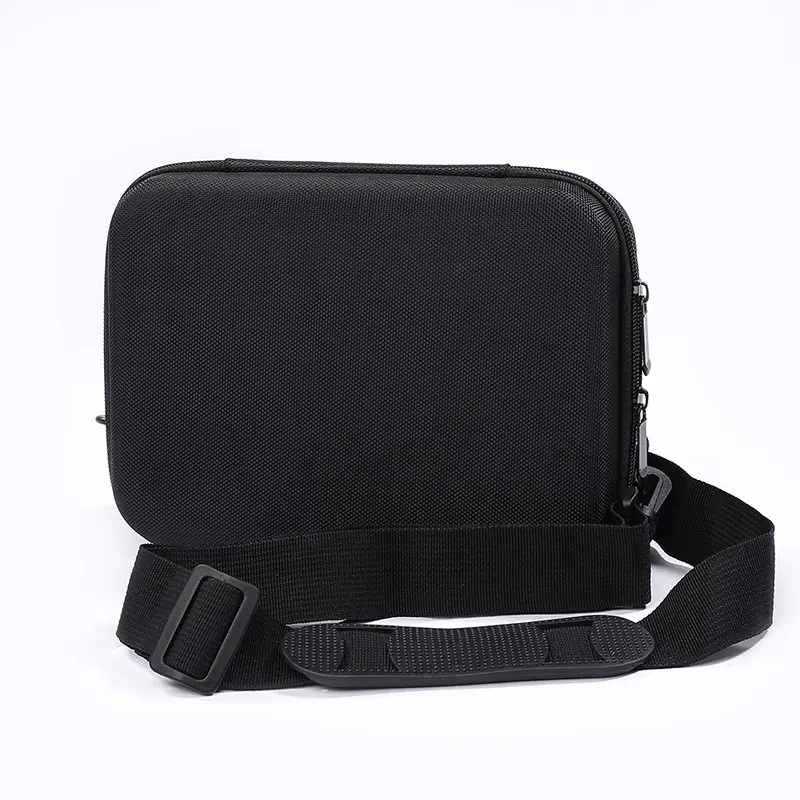Post-Processing of EVA Tool Bags
In the global market, EVA tool bags are favored by many wholesale buyers for their lightweight, durable, and waterproof properties. However, a high-quality EVA tool bag depends not only on its design and raw materials, but also on the post-processing process. Post-processing not only improves the product’s appearance and performance, but also reduces costs and improves production efficiency.
1. The Importance of Post-Processing of EVA Tool Bags
Post-processing of EVA tool bags refers to a series of processing steps performed after the product is formed to enhance its performance, appearance, and service life. These steps include but are not limited to surface treatment, edge trimming, accessory installation, and quality inspection. Good post-processing can significantly increase the product’s added value, making it more in line with market demand and helping it stand out in the fierce competition.
2. Key Post-Processing Technologies and Processes
(I) Surface Treatment
Surface treatment is one of the most critical steps in the post-processing of EVA tool bags. Common surface treatment methods include:
Painting and Printing: Adding patterns, text, or brand logos to the surface of EVA tool bags through spray painting or screen printing not only enhances the product’s aesthetics but also strengthens brand recognition. Coating: Applying special coating materials, such as waterproof, anti-fouling, and wear-resistant coatings, can significantly enhance the practicality and durability of tool kits.
Hot stamping and embossing: Hot stamping can create gold or other colored patterns on the EVA surface, while embossing can create a concave and convex texture, adding a high-end feel to the product.
(II) Edge Finishing
During the molding process, EVA tool kits may develop burrs or uneven edges. Hot cutting, cold cutting, or manual trimming can smoothen and even out the edges to prevent scratches.
(III) Accessory Installation
To meet the needs of different users, EVA tool kits are often equipped with various accessories, such as zippers, buckles, and dividers. During the post-processing stage, it is necessary to ensure that these accessories are securely installed and accurately positioned to maintain the overall quality and functionality of the product.
3. Selection and Application of Post-Processing Equipment
Efficient post-processing requires advanced equipment. The following are some common post-processing equipment and their applications:
Hot press: Used to heat-press EVA material to achieve the desired shape and size. During post-processing, heat presses can also be used for embossing and hot stamping of surface patterns.
Cutting machines: These include laser cutters and CNC cutters, capable of precisely cutting and shaping EVA tool kits, improving production efficiency and product quality.
Paint booths and drying equipment: These are used for drying after painting and printing, ensuring a uniform and durable coating while minimizing environmental pollution.
4. Selection and Management of Post-Processing Materials
The quality of post-processing materials directly impacts the performance and appearance of the final product. The following are some commonly used post-processing materials:
Coating materials, such as waterproof and wear-resistant coatings, should be compatible with the EVA material and exhibit stable performance.
Printing inks: Select environmentally friendly, non-toxic inks that meet international environmental standards while ensuring the clarity and durability of the pattern.
Accessory materials, such as zippers and buckles, should be of reliable quality and aesthetically pleasing quality to enhance the overall quality of the tool kit.
5. Quality Control in Post-Processing
Quality control is an integral part of the post-processing process. Through a rigorous quality inspection process, we ensure that every EVA tool bag meets high quality standards. Specific measures include:
Appearance Inspection: Inspect the product surface for scratches, color variations, unclear patterns, and other issues.
Dimensional Measurement: Ensure the product dimensions meet design requirements and are within tolerances.
Functional Testing: Functionality testing of the tool bag’s zippers, buckles, and other accessories ensures proper operation.
Durability Testing: Durability testing of the tool bag, including wear resistance, water resistance, and impact resistance, simulates actual usage scenarios.
6. Environmentally Friendly and Sustainable Post-Processing
Amidst growing global environmental awareness, the post-processing of EVA tool bags must also adhere to environmentally friendly principles. The following are some environmentally friendly measures:
Use of Environmentally Friendly Materials: In coating and printing, non-toxic, non-polluting, and environmentally friendly materials are prioritized to minimize negative environmental impact.
Energy Conservation and Emission Reduction: Optimize post-processing processes to reduce energy consumption, such as by using energy-saving equipment and rationally arranging production processes.
Waste Disposal: Waste generated during post-processing is sorted, recycled, and treated to reduce waste emissions.
7. Methods for Improving Post-Processing Efficiency
Efficient post-processing can shorten production cycles, reduce production costs, and enhance a company’s market competitiveness. The following are some methods for improving post-processing efficiency:
Automated production: Introducing automated equipment, such as automatic paint sprayers and automatic cutting machines, reduces manual labor, improves production efficiency, and improves product quality.
Optimizing process flows: Optimizing post-processing processes by eliminating unnecessary steps and rationally arranging the sequence of each process can reduce waiting time and logistics turnover.
Employee training: Strengthening professional training for post-processing staff improves their operational skills and quality awareness, thereby improving production efficiency and product quality.
Post time: Aug-04-2025





